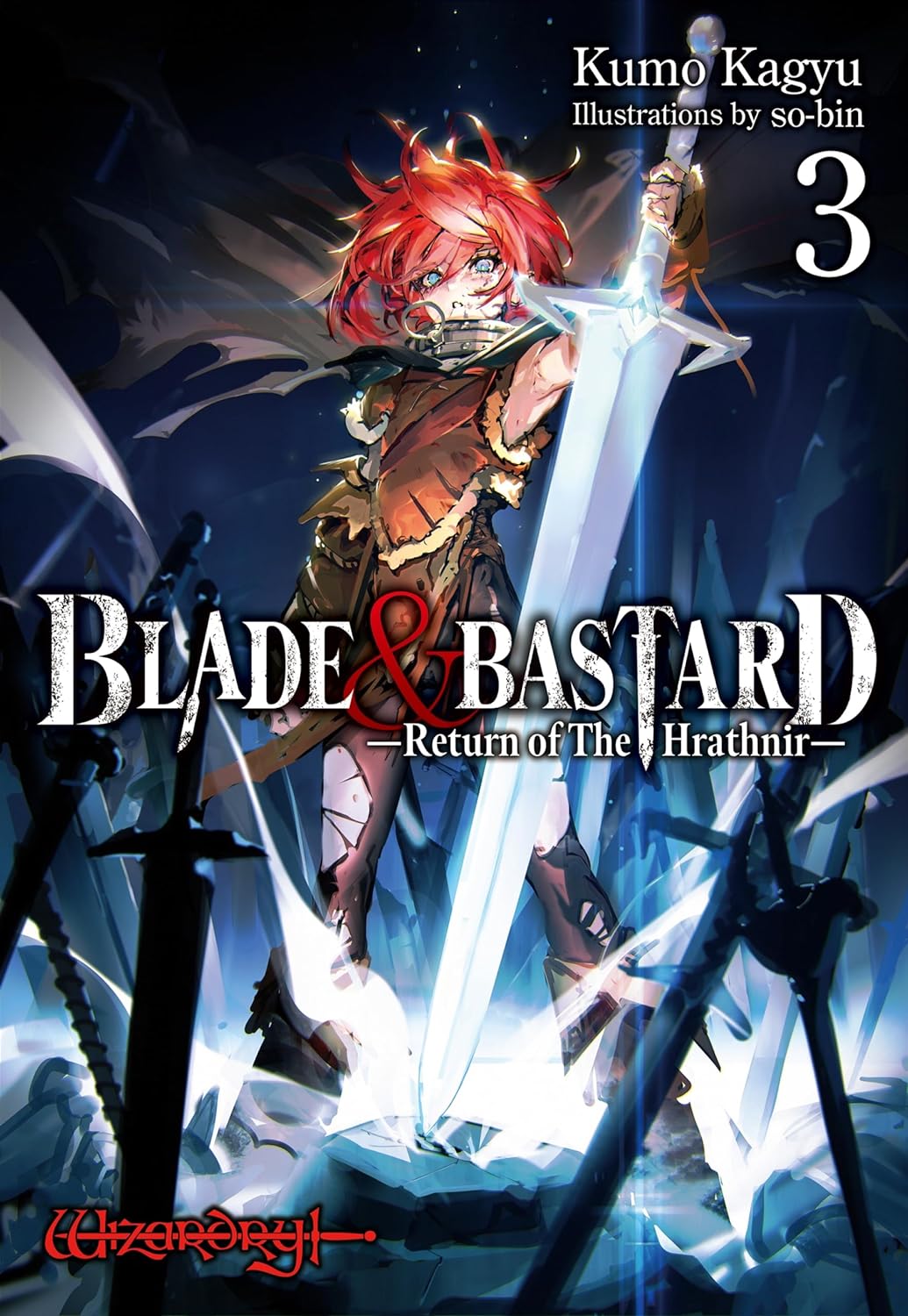By Kakkaku Akashi and Kayahara. Released in Japan as “Savage Fang Ojō-sama: Shijō Saikyō no Yōhei wa Shijō Saikyō no Bōgyaku Reijō to natte Futatabime no Sekai o Musō Suru” by Fujimi Fantasia Bunko. Released in North America by Yen On. Translated by Sarah Moon.
This is, for the most part, a good entry in the “reincarnated as a villainess” genre, with two big exceptions: a plotting decision at the start, and a characterization decision at the end. Other than that, it’s got a non-Japanese reincarnation, which is always nice, and a narrator who is a hell of a lot of fun. (Yen seems to have quietly dropped the “don’t let the books say fuck” guideline in the last year or two, and it’s allowed the books to sound more true to life much of the time.) I will note, though, that it’s a book that really assumes you want to see violence. The heroine used to be a mercenary who literally beat his enemies to death, and now that she’s the daughter of a duke she’s still capable of doing this, though at least holds back a bit. Mostly as she knows murder is a bad rep for a duke’s daughter to have.
The nation of Eltania is on the verge of collapse, thanks to its selfish and evil queen Mylene. We follow a group of mercenaries, led by a magicless but powerful man named Envil. Eventually Mylene is captured and is about to be executed when a foreign power shows up, using Eltania’s collapse as an excuse to invade. Envil ends up getting himself killed during this… and wakes up ten years in the past. But not in the orphanage that he first grew up in. No, he’s now in the body of Lady Mylene, already a holy terror and not yet engaged to the Prince. Now it’s up to Mylene to try to change the future as much as she can… while still, of course, making sure that she’s able to beat the crap out of absolutely anyone whenever she feels like it.
To start with a complaint, this book takes forever to get to the reincarnation. Most villainess books these days steamroll through the backstory as fast as possible to get to what readers like, which is why this one leisurely showing us that Envil is powerful and that Eltania is corrupt feels like a slog. After that things pick up, though. Mylene retains her foul mouth from her previous incarnation, at least when she’s not around other nobility, and it’s amusing to hear. She kicks eight kinds of ass. There’s a suggestion that Mylene (who has the “powers of a god”, supposedly) is fated to be greedy, and we see her, even in this new timeline, fall prey to it a bit. Best of all, though, is the scorching relationship between Mylene and Colette, the princess of the Empire that invaded Eltania in the prior timeline. I absolutely loved these two fighting and also looking like they were arguing about who gets to top. So, as you can imagine, the ending of this first volume, which has Colette essentially change to the same personality as the masochistic, worshipful prince who adores Mylene, left a sour taste in my mouth. Let two dominant women try to one-up each other, dammit.
Despite these issues, and a lot of violence/gore, this is still a good series debut. I’ll pick up the next one. Oh yes, warning, they do go to a noble academy. Did you forget what genre you were reading?



